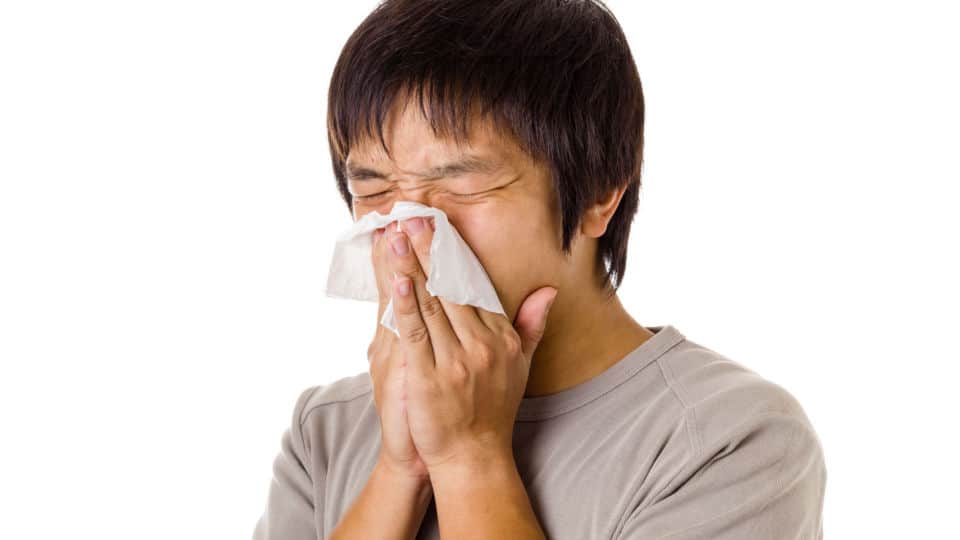Food allergies are not to be sniffed at

Food allergies are not to be sniffed at
Some food allergies, though rare, can have severe consequences for people suffering from them.
Allergies are becoming more common around the world. Even the inhalation of cooking fumes can, in rare cases, trigger a reaction severe enough to kill.
Earlier this month in the United States, an 11-year-old boy, who was allergic to seafood, reportedly died after inhaling the fumes of cod fish being cooked.
Indeed, food allergens may become airborne or aerosolised during the cooking process, said Dr Elizabeth Tham, a consultant at the division of paediatric allergy, immunology and rheumatology at National University Hospital.
For instance, when a dish of shellfish is being cooked, a person who is allergic to the food may develop an allergic reaction to the airborne allergen upon inhalation of it.
The person is likely to be highly allergic to the particular food, said Dr Chong Yong Yeow, a specialist in rheumatology and consultant at Raffles Internal Medicine Centre.
“This means a small or trace amount of the allergen (usually protein which triggers an allergic reaction) can lead to a reaction,” he said.
But such allergies are rare. An allergy happens when a person’s body overreacts to something that is usually harmless by activating an immune response.
During the process, certain substances such as histamine are released, causing unpleasant symptoms such as itching, wheezing and swelling.
In severe cases, a life-threatening reaction called anaphylaxis can happen. Most allergies are caused by allergens such as pollen, dust, animal dander and mould, as well as common food allergens such as peanuts, cow’s milk, seafood and eggs.
The smell of food allergens is unlikely to trigger an allergic response. Neither are the fumes from cooking oil likely to trigger one, said Dr Chong.
It is the food allergens that can cause an allergic reaction. While reported cases of rare allergies are triggered by a shellfish allergy, all kinds of food can potentially release allergens in the air when they are being cooked openly, said Dr Chong.
“Sometimes it is very difficult to be sure which food particles (triggered the reaction), especially when many dishes are being cooked,” he added.
In Singapore, where steamboat meals are gaining in popularity, some people may experience a blocked nose during the meal. But it is unlikely to be triggered by an allergy to the fumes or food. “I do not think it is the ingredients from the steamboat, for example, prawns or shellfish, that trigger the blocked nose,” said Dr Chong.
“A blocked nose can occur in a susceptible individual who has allergic rhinitis when exposed to hot steam. This is because the change in temperature can potentially irritate the nose.”
Dr Tham said an allergic reaction typically includes an itchy skin rash and facial swelling, and, in more severe cases, difficulty in breathing or fainting.
Some people may experience a blocked nose and facial numbness, but she said these are not typical symptoms of an allergic reaction. Some people have unusual allergies. Dr Tham has seen a patient develop anaphylaxis 20 minutes after she ate home-cooked fried fish coated with Japanese flour.
Another patient had similar life-threatening symptoms one hour after eating home-baked scones.
Both of them have a rare allergy called the pancake syndrome, where allergic reactions occur in dust mite-allergic individuals after eating baked products made from flour contaminated with house dust mites.
“The prevalence is unknown and only occasional cases have been reported worldwide and in Singapore,” said Dr Tham.
This syndrome, also known as oral mite anaphylaxis, occurs primarily in individuals who are allergic to dust mites and suffer from allergic rhinitis, asthma or both. They may also not be able to tolerate non-steroidal anti-inflammatory drugs.
Symptoms may include breathlessness, wheezing, eye or lip swelling, hives or fainting. This allergy is difficult to diagnose as it may be mistaken for an allergy to wheat flour, said Dr Tham.
“A careful history as well as skin testing for wheat and dust mite allergy and even examination of the implicated flour may be required for a definitive diagnosis.”
Dr Karen Choo, an associate consultant at the department of dermatology at Singapore General Hospital, said that many patients have sought help for their “unusual allergies”.
However, on closer questioning and examination, the symptoms are suggestive of hives (urticaria) caused by chronic spontaneous urticaria in most cases, she said.
Hives are itchy, raised, reddish areas on the skin and about a quarter of the general population can have hives during their lifetime, according to the American Academy of Allergy, Asthma & Immunology.
“We would need to take a proper history – asking questions to clarify what a patient means when he or she says ‘I have an allergy’,” Dr Choo said.
She added that there are certain tests available to help identify a trigger agent, such as skin-based patches or prick tests as well as blood tests.
If you suspect you have an allergy, it is best to take photos of the rashes as they may have changed by the time you see an allergist, she said.
Many people are able to recognise the symptoms of mild to moderate allergy: hives on the skin, lip or eye swelling, and may even selfmedicate with antihistamines.
However, a minority of patients might progress to develop severe symptoms suggestive of anaphylaxis despite antihistamines.
“Please seek medical attention if there is eye or lip swelling accompanied by a sudden change in voice, hoarseness, throat tightness or breathlessness,” advised Dr Choo.
“Less common symptoms include palpitations, vomiting, abdominal cramps or confusion.”
In managing allergies, what you can do is to work with the doctor to identify possible triggers and take steps to avoid them.
“Sometimes, a patient might be issued an adrenaline auto-injector as a stop-gap measure should accidental exposure occur, resulting in a severe allergic reaction,” said Dr Choo.
“It’s important to seek medical attention after injecting adrenaline even if the person feels fine as there could be a second wave of symptoms after the initial allergic reaction.”



